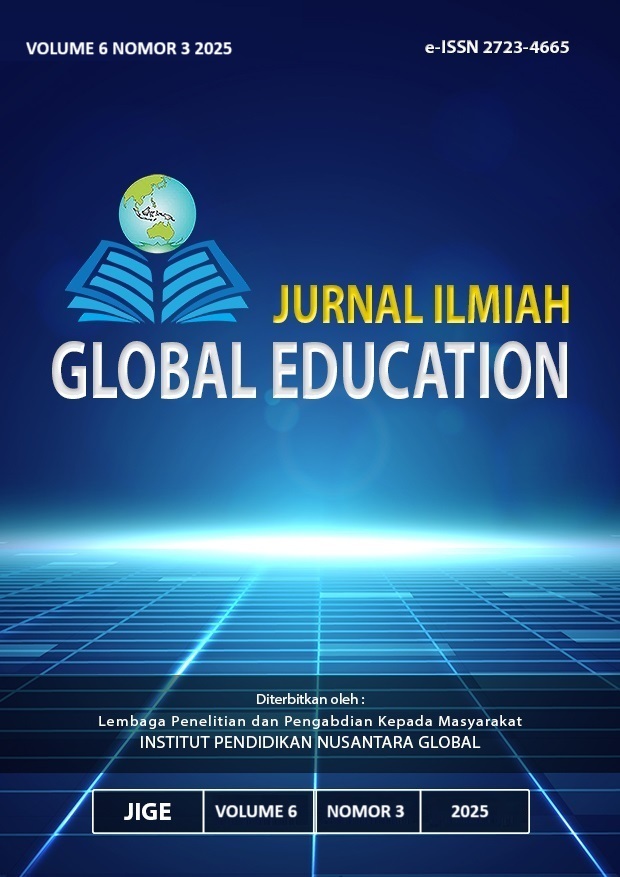Analisis Indeks Kepuasan Masyarakat Studi Kasus: Puskesmas Pananae Kota Bima
DOI:
https://doi.org/10.55681/jige.v6i3.3848Keywords:
interest, injectable contraceptives, knowledge, husband support, health workersAbstract
This study aims to analyze the factors influencing the interest in injectable contraceptives in Bima City. The research used a quantitative analytic method with a cross-sectional approach. The sample consisted of 95 women of reproductive age who used injectable contraceptives. Data were analyzed using Chi-Square and logistic regression tests to determine the relationships and effects among variables. The results showed that knowledge, husband’s support, and the role of health workers had significant effects on the interest in injectable contraceptives. Meanwhile, attitude and media information showed no significant influence. The study concludes that interest in injectable contraceptives is strongly influenced by women's knowledge and husband’s support, and further supported by the active role of health workers. Increased education and communication by health personnel are needed to raise public awareness
Downloads
References
Abdussamad, Z. (2021). Metode penelitian kualitatif. CV. Syakir Media Press.
Agustianti, R., Nussifera, L., Angelianawati, L., Meliana, I., Sidik, E. A., Nurlaila, Q., Simarmata, N., Himawan, I. S., Pawan, E., & Ikhram, F. (2022). Metode penelitian kuantitatif dan kualitatif. Tohar Media.
Auliya, N. H., Andriani, H., Fardani, R. A., Ustiawaty, J., Utami, E. F., Sukmana, D. J., & Istiqomah, R. R. (2020). Metode penelitian kualitatif & kuantitatif. CV. Pustaka Ilmu Group.
Bongaarts, J. (2017). The effect of fertility decline on population growth: A reassessment. Population and Development Review.
Cleland, J., Conde-Agudelo, A., Peterson, H., Ross, J., & Tsui, A. (2012). Contraception and health. The Lancet, 380(9837), 149–156.
Darroch, J. E., Singh, S., & Weissman, E. (2016). Adding it up: The costs and benefits of investing in sexual and reproductive health 2017. Guttmacher Institute.
Erricker, C. (2009). Pendekatan fenomenologis. Dalam P. Connolly (Ed.), Aneka pendekatan studi agama. Pustaka Pelajar.
Findlay, I., Dunne, M. J., Ullrich, S., Wollheim, C. B., & Petersen, O. H. (2019). Konsep kependudukan dan KIE dalam pelayanan KB. FEBS Letters, 185(1).
Mustafidah, H., & Suwarsito, S. (2020). Dasar-dasar metodologi penelitian (T. Haryanto, Ed.; Cetakan pertama). UM Purwokerto Press.
Nurhayati, A., Ramadhani, R. F. W., & Umamy, R. (2021). Faktor–faktor yang berhubungan dengan pemilihan metode alat kontrasepsi suntik oleh wanita usia subur di masa pandemi COVID–19 wilayah PMB Juju Juharni Kota Depok periode 2020. Jurnal Ilmiah Kesehatan, 13(2), 89–98. (Catatan: Jika ini ada nama jurnalnya, bisa diperbaiki dengan yang benar)
Nurullah, F. A. (2021). Perkembangan metode kontrasepsi di Indonesia. Cermin Dunia Kedokteran, 48(3), 166–172.
Rahdiyaningrom, R., Prasetyowati, E., & Adelia, D. D. (2021). Hubungan antara tingkat pengetahuan tentang kontrasepsi suntik 3 bulan dengan kepatuhan jadwal penyuntikan ulang suntik 3 bulan di BPS Ani Latifah Tirtoyudo Kabupaten Malang. Biomed Science, 8(1), 9–20.
Sedgh, G., Singh, S., Hussain, R., & Bankole, A. (2016). Intended and unintended pregnancies worldwide in 2012 and recent trends. Studies in Family Planning, 47(3), 227–238.
Sugiyono. (2018). Metode penelitian kuantitatif, kualitatif, dan R&D (15 ed.). Alfabeta.
UNFPA. (2020). State of world population 2020: Against my will—Defying the practices that harm women and girls and undermine equality. United Nations Population Fund.
WHO. (2022). Family planning/contraception methods. https://www.who.int/news-room/fact-sheets/detail/family-planning-contraception
Downloads
Published
How to Cite
Issue
Section
License
Copyright (c) 2025 Nurfaridah, Saimi, Karjono, Lalu Abdul Khalik

This work is licensed under a Creative Commons Attribution-ShareAlike 4.0 International License.












